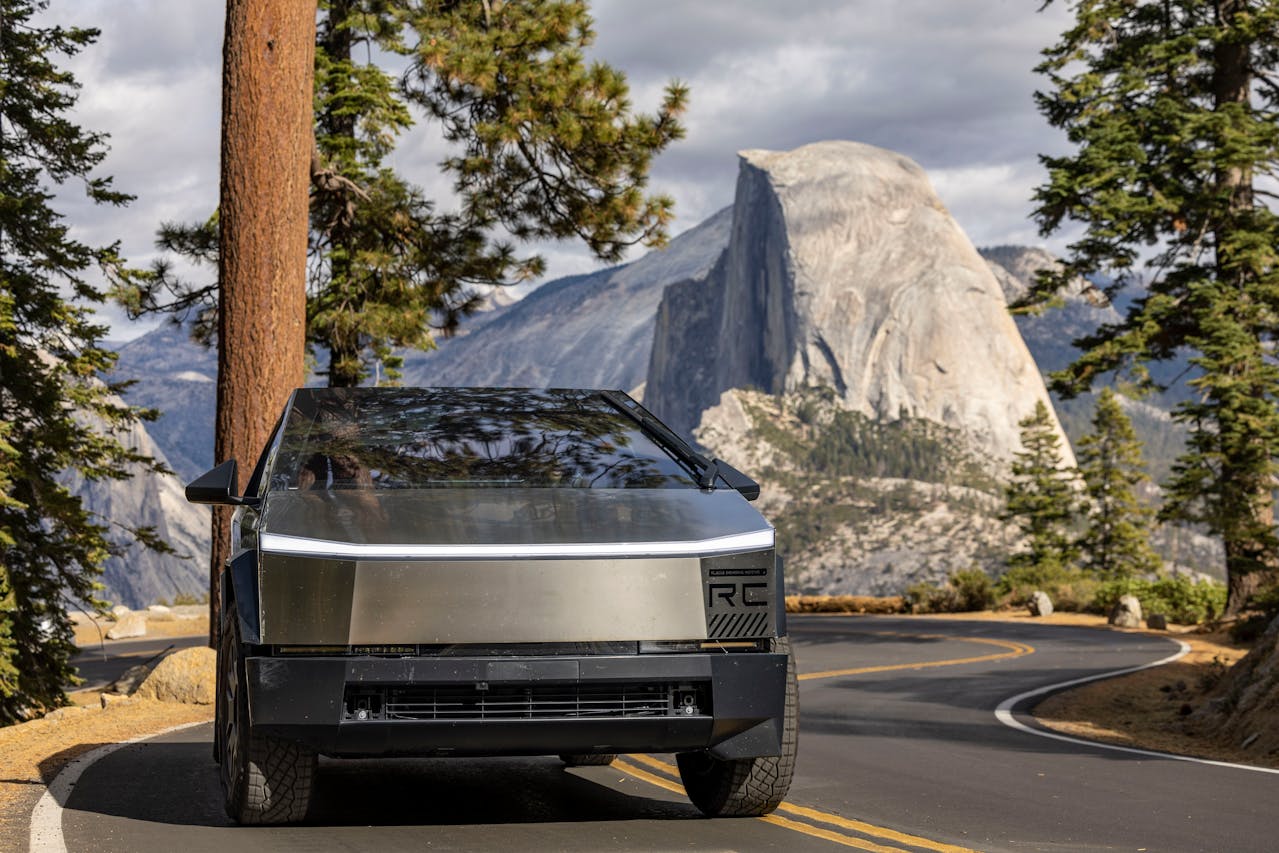Automotive
Full Guide about Used or Old Car Finance

Just like the increasing demand for used cars, there has been a simultaneous rise in increasing needs of financing for such purchases too. Many lending institutions thus provide dedicated used car finance to help individuals raise the necessary funds for vehicle purchase. Thanks to the high financing value that these loans provide, one can easily purchase his or her desired used car, even if it seems costly and out of budget.
These second-hand car loans are similar to traditional car loans, albeit they are tailored to meet one’s financing needs for a used car purchase. They come with various peripheral details that one must be aware of before diving in to apply for the loan. Below given is a detailed guide on the essential things you must be aware of related to used car loans for a well-informed borrowing decision.
Top Features of Second Hand Car Loans
Lenders extend various attractive features and benefits on used car finance to make loan management hassle-free and convenient for borrowers. Here are some of the most popular ones.
- Despite a high financing availability, the total loan remains under the financing value for new cars. It allows you to keep the EMIs in check, thus easing loan repayment.
- With some of the best lenders, you can easily avail a used car loan of up to Rs.50 lakh to purchase your desired used car model.
- The repayment tenures for these loans are usually available over an extended period of 5 to 7 years, which means you get a long term to service these loans as per your affordability.
- With the right lending institution and on meeting required eligibility, you can avail as much as 100% of the car’s resale value as financing for vehicle purchase.
- You can apply for a used car loan online in a few simple steps from the comfort of your home. It doesn’t even require you to step out for document submission as the lender representative would visit you for it.
- Only a few documents need to be submitted as proof of your eligibility for availing the loan.
- When purchasing a used car through financing, the depreciation rate along with cost of insurance purchase are usually lower than that for a new car, making the loan more affordable.
However, there are a few things you need to be careful about too when availing of a used car loan to ensure you receive maximum benefits of purchase financing. They include the following.
- Interest rates on second hand car financing are often higher than loans for new cars due to the increased inherent risk of depreciation and other damages involved.
- You must check if the car is less than 3 years old or not, or you risk the chances of being denied a used car loan. If provided, you might not be able to secure favourable terms on the advance.
- In the case of used car loans, the lending institution does not cover the cost of insurance purchase. Hence, you would need to arrange for the necessary finances beforehand.
Application Process to Avail a Used car Loan
You can apply both online and offline to avail used car finance, although the online process is much simpler and faster. Here are the steps to follow once you have selected the second-hand car to purchase and decided on your loan amount and tenure.
Step 1: Visit the official website of your lender and navigate to the page dedicated to used car loans.
Step 2: Next, click on the ‘apply now or ‘online application’ option, as available, to access your online application form.
Step 3: Once redirected to your application form, you can start filling in your personal and financial details. Proceed to fill in the loan amount needed and a suitable tenure. Make sure to check the accuracy of all the entries for hassle-free loan application processing.
Step 4: Submit the required details online.
Step 5: Complete your application by submitting the form.
Once submitted, the loan application will undergo assessment and the loan will be approved after due verification. If all your details are in place, it may take just a few minutes for the approval to come by. Following this, the loan amount is also disbursed in the coming 24 hours.
You can simplify your application processing experience with the following tips in mind.
- Compare available lenders to arrive at the most affordable loan offer at competitive rates. Also, negotiate with the lender for rate reduction based on your eligibility.
- Use a dedicated EMI calculator to plan for your loan suitability and repayment. It allows you to select a suitable loan amount and a tenure that keeps the EMIs within your repayment capacity, so your personal finances are not strained for meeting the repayment liability.
- Make sure you select a reputed lender to borrow from so that there are minimal delays in loan processing and all the steps are streamlined.
- Arrange all required documents and keep them handy before applying so that the application process is fast-tracked.
Things to Take Care of Before a Second-Hand Car Purchase
As the purchase of a used car comes with ownership transfer along with multiple paperwork requirements, you must check a few things to ensure hassle-free purchase and ownership of the vehicle. Following are the things to verify.
- Make sure that you have checked the car’s condition with the help of a technician. Any issue found shall be conveyed to the previous owner for price negotiation.
- Match the important details mentioned on vehicle RC and insurance certificate like engine and chassis number with actual prints on the parts. Also, confirm if the car had been involved in any previous accidents or thefts before arriving at final valuation.
You must also complete RC and insurance transfer during the purchase to claim complete ownership of the vehicle for necessary financing.
If there are any issues with the vehicle, such as fluid leakage or rust, you must get them serviced before initiating the final purchase and applying for the loan. Doing so shall ensure you do not have to pay anything from your pocket after the purchase has been completed with the available used car finance.

Automotive
The Eco-Friendly Approach to Car Scrapping

The automobile industry has been a cornerstone of modern society, providing convenience and mobility to millions. However, the production and eventual disposal of cars can have significant environmental impacts. Traditional car scrapping methods have been associated with pollution, resource depletion, and landfill waste. In recent times, an increasing concern for the environment has led to the emergence of an eco-friendly approach to car scrapping.
The Environmental Impact of Car Scrapping
Car scrapping, also known as recycling or dismantling, involves the end-of-life management of vehicles. In the past, old cars were often left to rust in junkyards or sent to landfills, contributing to environmental degradation. The components of vehicles, such as batteries, engine fluids, and plastics, contain hazardous materials that can seep into the soil and water, harming ecosystems and human health.
The Eco-Friendly Approach to Car Scrapping

To address the environmental challenges posed by car scrapping, an eco-friendly approach has gained momentum. This approach emphasizes sustainability, responsible disposal, and resource conservation. Here are some key strategies for adopting an eco-friendly approach to car scrapping:
1. Choose Certified Green Facilities
When it’s time to scrap your car, opt for certified green facilities that follow environmentally friendly practices. These facilities are equipped to handle hazardous materials safely and have processes in place to recycle as many car components as possible. Choosing such facilities ensures that your car’s end-of-life journey is as environmentally friendly as possible.
2. Properly Dispose of Hazardous Materials
Before scrapping a car, it’s essential to remove and dispose of hazardous materials properly. These include engine oils, transmission fluids, and coolants. Recycling centers and green facilities have specialized procedures for dealing with such substances, preventing them from contaminating the environment.
3. Promote Car Recycling and Reusing
Encourage car owners to consider recycling and reusing car components whenever possible. Many parts of a car can be salvaged and used in other vehicles, reducing the demand for new manufacturing and conserving natural resources. Recycling metals from old cars also helps cut down on mining activities, which have environmental consequences.
4. Encourage Hybrid and Electric Car Scrapping
Hybrid and electric vehicles are becoming more prevalent, and they offer significant environmental benefits compared to traditional gasoline-powered cars. Encouraging the scrapping of old, polluting vehicles in favor of hybrids or electric cars helps reduce overall emissions and promotes a cleaner, greener future.
The Advantages of Eco-Friendly Car Scrapping
Adopting an eco-friendly approach to car scrapping comes with several advantages that extend beyond environmental benefits.
1. Reducing Carbon Footprint
By recycling and reusing car parts, we reduce the need for new manufacturing, which requires energy and resources. This, in turn, decreases the carbon footprint associated with producing new vehicles and contributes to mitigating climate change.
2. Conserving Natural Resources
The automobile industry relies heavily on finite natural resources, such as metals and petroleum. Eco-friendly car scrapping helps conserve these resources by reusing existing materials, promoting a more sustainable circular economy.
3. Minimizing Landfill Waste
Traditional car scrapping methods have contributed to the accumulation of massive amounts of waste in landfills. Eco-friendly practices divert a significant portion of the car’s components away from landfills, reducing the strain on waste management systems.
4. Boosting the Green Economy
The shift towards eco-friendly car scrapping creates opportunities in the green economy. Recycling centers, green facilities, and sustainable car manufacturing all contribute to job growth and economic development in the environmental sector.
Steps to Take When Scrapping Your Car Sustainably
If you’re considering scrapping your car in an eco-friendly manner, follow these steps to ensure a smooth and responsible process.
1. Research Green Scrap Yards
Find certified green scrap yards or recycling centers in your area. These facilities are committed to eco-friendly practices and responsible car scrapping.
2. Remove Personal Belongings and Non-Recyclables
Before handing over your car for scrap, remove any personal belongings and items that cannot be recycled. Clean out the vehicle thoroughly to ensure a hassle-free experience.
3. Gather Necessary Documentation
Some recycling centers may require specific documents, such as proof of ownership and vehicle identification numbers. Gather all necessary paperwork before visiting the scrap yard.
4. Transport the Vehicle Safely
If your car is no longer roadworthy, arrange for safe transportation to the scrap yard. Be mindful of environmental regulations during transportation to prevent any accidental spills or leaks.
The Role of Government Policies in Promoting Eco-Friendly Car Scrapping
Government policies play a vital role in driving the adoption of eco-friendly car-scrapping practices.
1. Incentives and Subsidies
Governments can offer financial incentives or subsidies to individuals who choose to scrap their old vehicles in an environmentally friendly manner. These incentives encourage more people to embrace sustainable scrapping practices.
2. Stringent Environmental Regulations
By enforcing strict environmental regulations, governments ensure that scrap yards and recycling facilities follow eco-friendly protocols. Penalties for non-compliance motivate these establishments to prioritize responsible car scrapping.
3. Collaborating with Auto Manufacturers
Governments can collaborate with automobile manufacturers to design vehicles with better recyclability in mind. Working together to create more sustainable products fosters a circular economy and reduces the environmental impact of car scrapping.
Automotive
Tesla Cybertruck Set to Enhance Off-Roading Capabilities with New Updates

Tesla is gearing up to boost the off-road performance of its Cybertruck with a series of updates aimed at enhancing its versatility and appeal among outdoor enthusiasts. The electric pickup, known for its distinctive design and robust features, will soon include new driving modes specifically tailored for challenging terrains.
The upcoming Overland Mode is designed to optimize handling and traction across various surfaces such as snow, gravel, rock, and sand, making the Cybertruck a more competent vehicle in off-road conditions. Additionally, the Baja Mode will allow for more dynamic driving by reducing the influence of stability controls, thereby improving the vehicle’s balance and agility during high-speed maneuvers.
For those opting for the dual-motor all-wheel-drive (AWD) configuration, the Cybertruck will offer a Locking Differential setting that helps maintain torque and traction when navigating slippery or uneven landscapes. The more advanced tri-motor variant, dubbed the “Cyberbeast,” will feature a front-locking differential that automatically engages in Overland Mode to enhance rear-wheel traction consistently.
Tesla is also introducing Trail Assist, a cruise control-like feature that aids in maintaining consistent speed while tackling off-road trails. This function will prevent wheel slippage on steep inclines and declines, further underscoring the Cybertruck’s capabilities as an off-road vehicle.
In addition to these off-road enhancements, the Cybertruck will support the much-anticipated Cybertent accessory. This update includes a mode that levels the suspension for a stable setup, keeps the tonneau cover open, and ensures continuous power supply to essential systems like air conditioning and power outlets, making the Cybertruck an ideal companion for extended outdoor adventures.
On-road safety is not overlooked, as the new Slippery Surface feature improves traction on wet and icy roads. This feature, along with the virtual rear differential, which is advised for temporary use, aims to provide safer driving conditions under adverse weather.
While Tesla has not specified a release date for these updates, they are expected to significantly enhance the Cybertruck’s performance both on and off the road, positioning it as a formidable competitor against other electric pickups like the Rivian R1T and Ford F-150 Lightning.
These updates come at a crucial time as Tesla aims to improve the Cybertruck’s market position following a full recall due to a mechanical issue with the accelerator pedal and challenges in ramping up production.
Automotive
Tesla to Unveil Robotaxi on August 8, Musk Confirms Amid EV Production Shift

Tesla is set to unveil a new robotaxi on August 8, Elon Musk has confirmed via X (formerly Twitter). This announcement came shortly after Reuters reported that Tesla is discontinuing its plans to develop a low-cost electric vehicle (EV). According to Reuters, Musk has redirected the company’s focus to prioritize the development of robotaxis using Tesla’s small-vehicle platform.
For years, Tesla has teased the market with the prospect of a more affordable EV, initially forecasting a starting price of $25,000. As recently as January, Musk expressed optimism about launching this model in the second half of 2025. However, following the Reuters report, Musk refuted the claims, tweeting that “Reuters is lying (again).” He did not specify which part of the report he was disputing, but his confirmation of the robotaxi project suggests that the cancellation of the low-cost EV might be the contested point.
Currently, Tesla’s most affordable model is the Model 3, which starts at $39,000. The upcoming robotaxi initiative raises questions about how Tesla plans to implement this service using only a camera-based system, especially since it has phased out the use of radar and other sensors from its driver assistance technologies—components that competitors like Waymo heavily rely on.
The shift in focus to robotaxis represents a significant pivot in Tesla’s strategy, aligning with Musk’s broader vision for the company’s role in the future of autonomous transportation. The automotive industry and consumers alike eagerly anticipate further details about the robotaxi’s capabilities and how it will integrate into Tesla’s product lineup.
-

 Business3 years ago
Business3 years agoThe Most Efficient Ways To Use The Best 6 Business Keynote Presentations
-

 Apps and Software12 months ago
Apps and Software12 months agoStarbucks Partner Hours App Login Guide
-

 Entertainment12 months ago
Entertainment12 months ago15 Best IPTV Service Providers in the UK 2025
-

 Tech3 years ago
Tech3 years agoIs Forecasting A Part Of Data Science?
-

 Economy4 years ago
Economy4 years agoWhat does it mean to Dream About Pennies?
-

 Entertainment12 months ago
Entertainment12 months ago10 Best Free Video Player Apps For Apple TV
-

 Entertainment2 years ago
Entertainment2 years agoHow To Enhance Your Viewing with Video Subtitle Support
-

 Food & Drinks12 months ago
Food & Drinks12 months agoTop 20 Low-Calorie Healthiest Biscuits and Cookies for Weight Loss in 2025






























